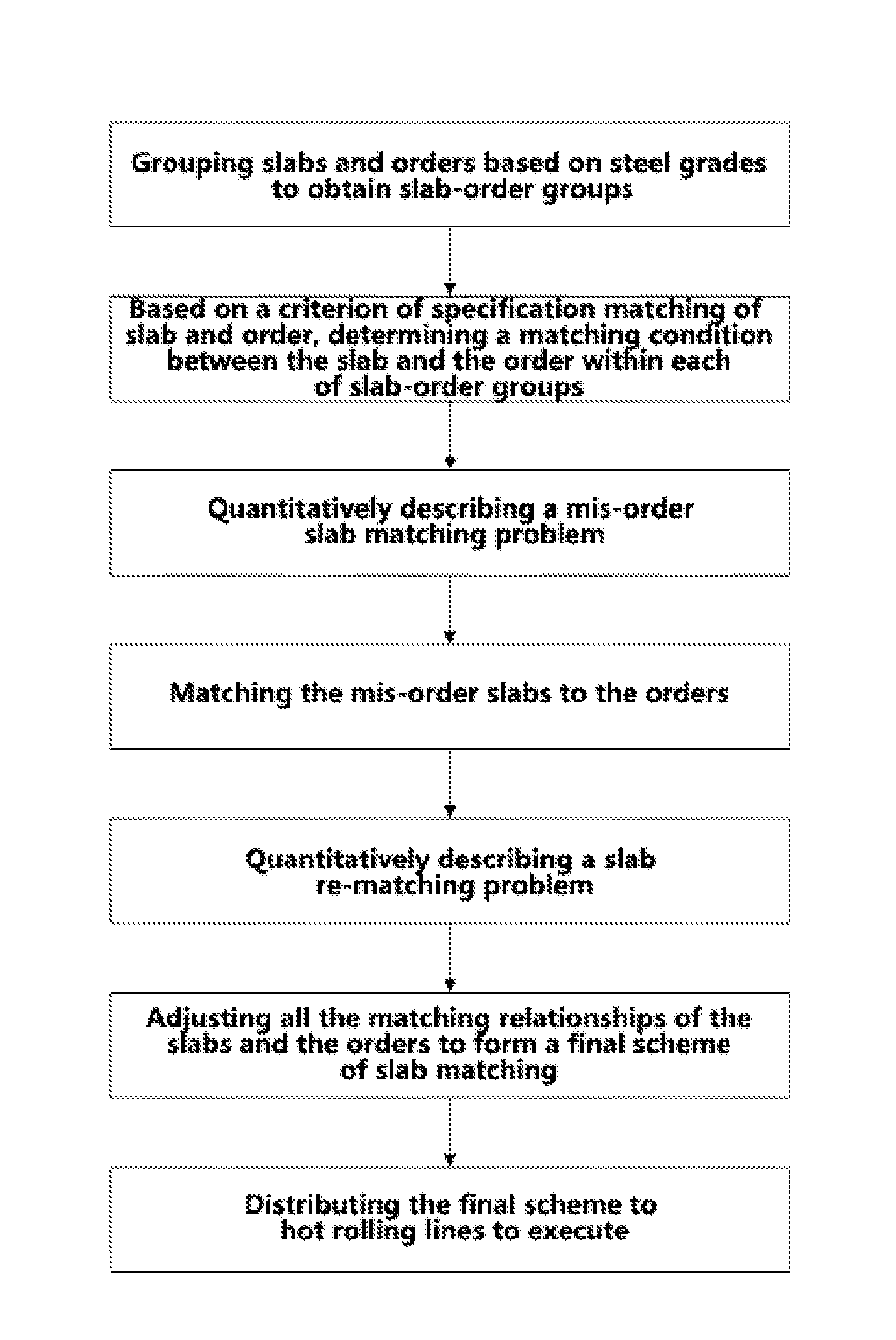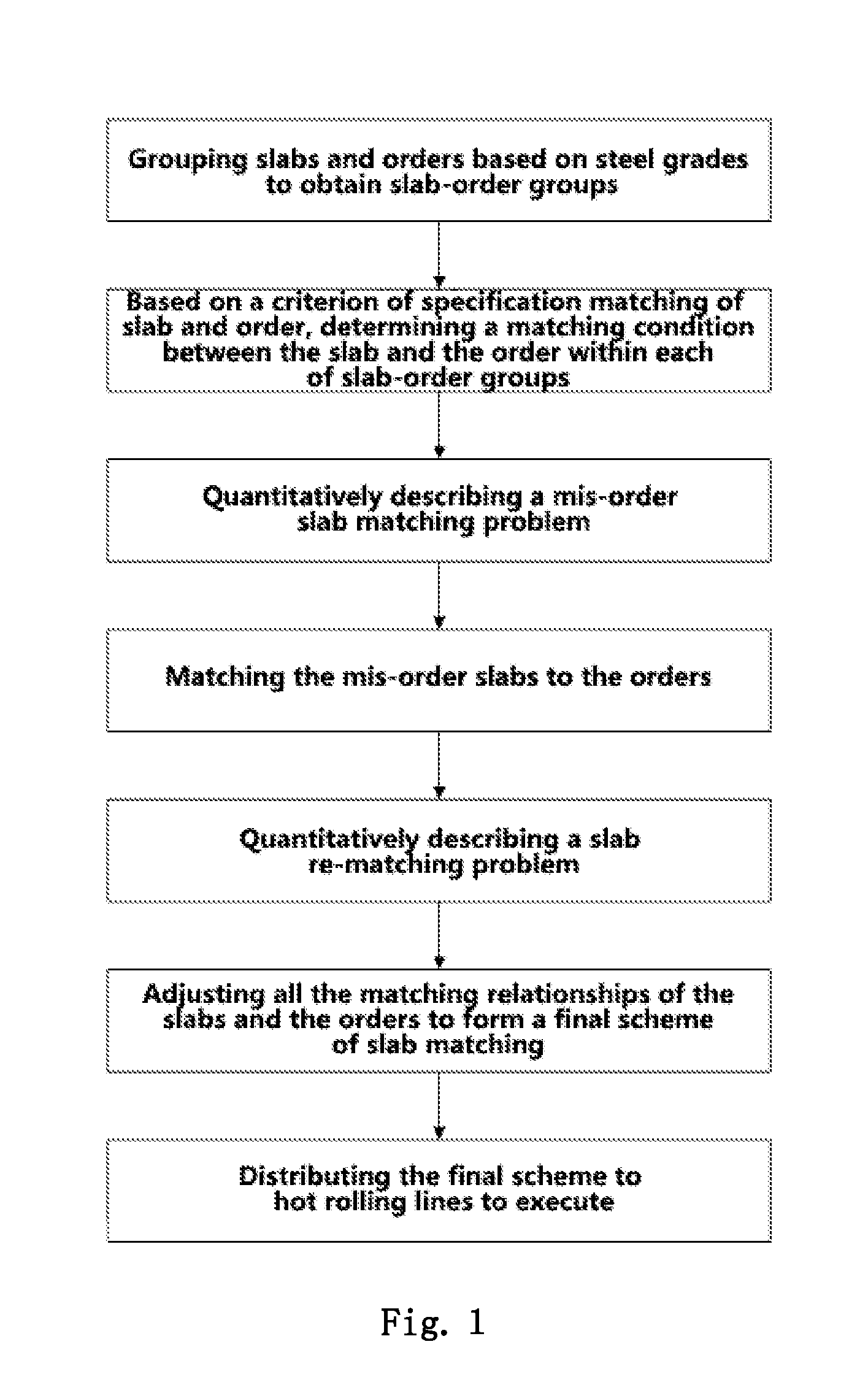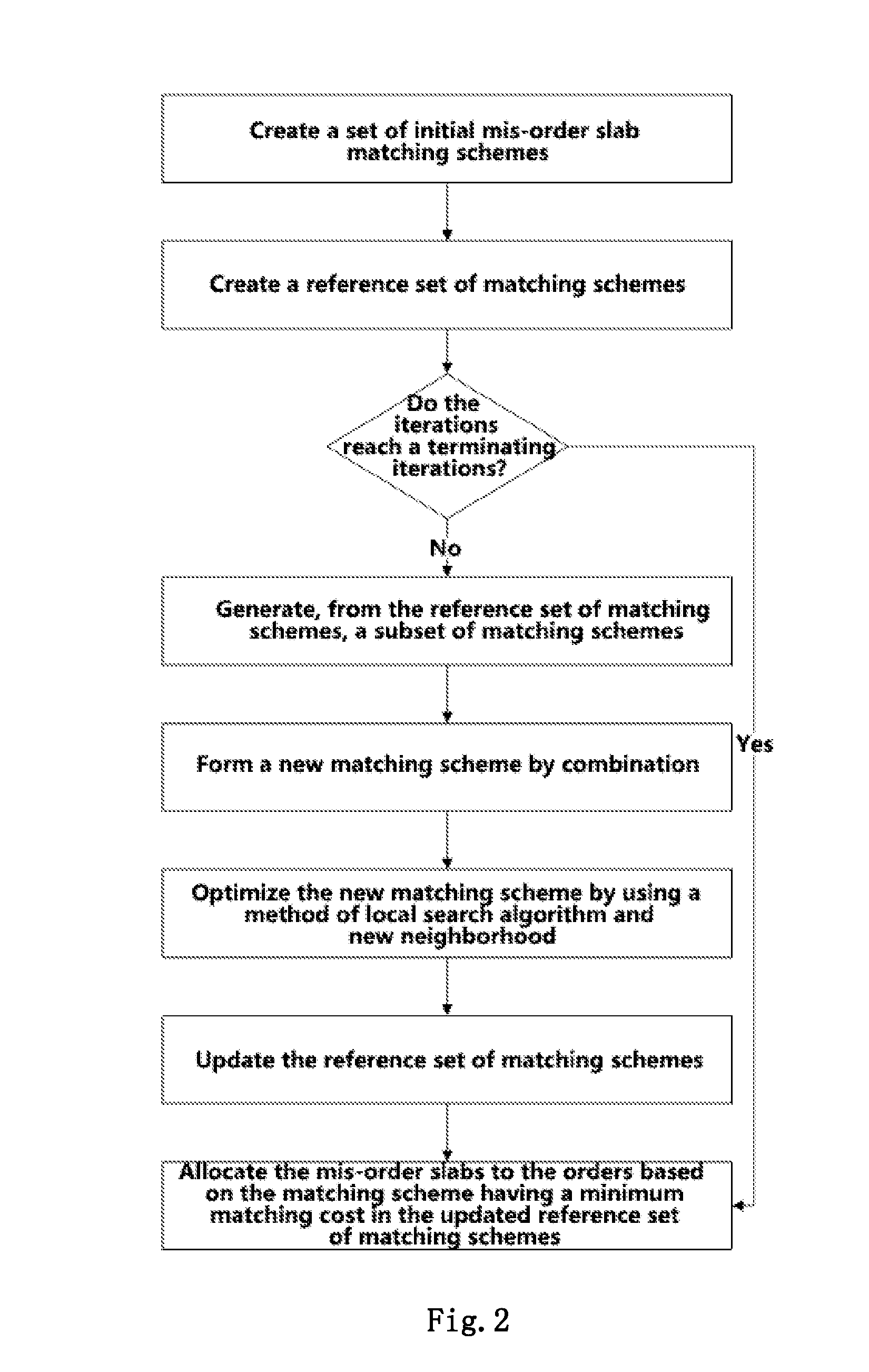However, this transformation may bring challenges to the steel plant.
As large equipment of
high energy consumption, the steelmaking converter and the electric furnace have a high cost for startup and operation, and the capacity of the steelmaking line must be fully exploited for the steelmaking is a
bottleneck process for overall capacity of the steel production.
As the market demand for steel tends to be diversified types of small batches, the total weight of slabs in the same charge plan is often lower than the minimum production amount required by steelmaking operation, which leaves over a lot of mis-order slabs.
Besides, if the
client's order is cancelled but the production for this order has started, mis-order slabs are also produced.
If these mis-order slabs are not fully utilized, it may also lead to resource waste caused by repeated steelmaking, the
delayed delivery, large
cut-loss and low hot charging rate, and hence, it not only increases the production cost and lowers customer's satisfaction, but also increases energy and
resource consumption, increases the CO2 emissions, and increases the environment
pollution.
Besides, sometimes the slabs and the orders need to be re-matched, i.e., the re-matching the slabs to orders, due to variation of the organization of the plant or the
client's requirement, such as: (1) when the
continuous caster is producing the slabs, due to adjustment of the width of the slabs, the specification of the transition slabs, which connect two slabs with different width, might not meet the requirement of the order, or the quality of the transition slabs, which connect two slabs with different steel grades, might not meet the requirement of the order due to
casting of dissimilar steel grades (usually between steel grades close to each other), thus causing the undesired matching between the slabs and the orders; (2) some urgent orders (which have a urgent date of delivery) might lack slabs due to
waste material of the post-process, and it is necessary to adjust the matching between the slabs and the orders to guarantee that the urgent orders can be delivered in time; (3) if the
client's requirement for the steel grade, size and weight is varied, obviously the produced slabs according to original requirement cannot meet the changed requirement.
Due to the huge amount of data and complicatedness of the problems, planners usually consider the respective lines separately when making the mis-order slab matching plan and slab re-matching plan, but in the view of the overall process of hot rolling, such a scheme is not
global optimal.
Most of the planners make the plans according to the table in an written form, and only a few of the planners do this job on an ERP information platform; but this ERP information platform still only provides information about data and cannot do the work of automatic optimization, and the planning is still based on personal experience and some simple rules.
When facing the huge amount of information about data and the complicatedness of the matching rules, it is difficult for the planners to make an efficient scheme accurately and timely, which causes an undesired and un-
optimal matching, thus resulting in low utilization of the slabs, high consumption of resource, high
inventory level of slab
yard, and
delayed delivery of orders etc.
bs. They all did not give how to make re-matching plan for slabs and orders when the production variation occ
However, all these discussions are with respect to either the matching of left slabs or the re-matching of slabs for single
production line, and do not consider the mis-order slab matching decision and slab re-matching decision simultaneously, do not involve the matching for multiple lines, and haven't take the position of the
storage area, time in storage and the logistic expenses into consideration.
Secondly, these discussions treat the slab matching and re-matching separately.
 Login to View More
Login to View More  Login to View More
Login to View More 


